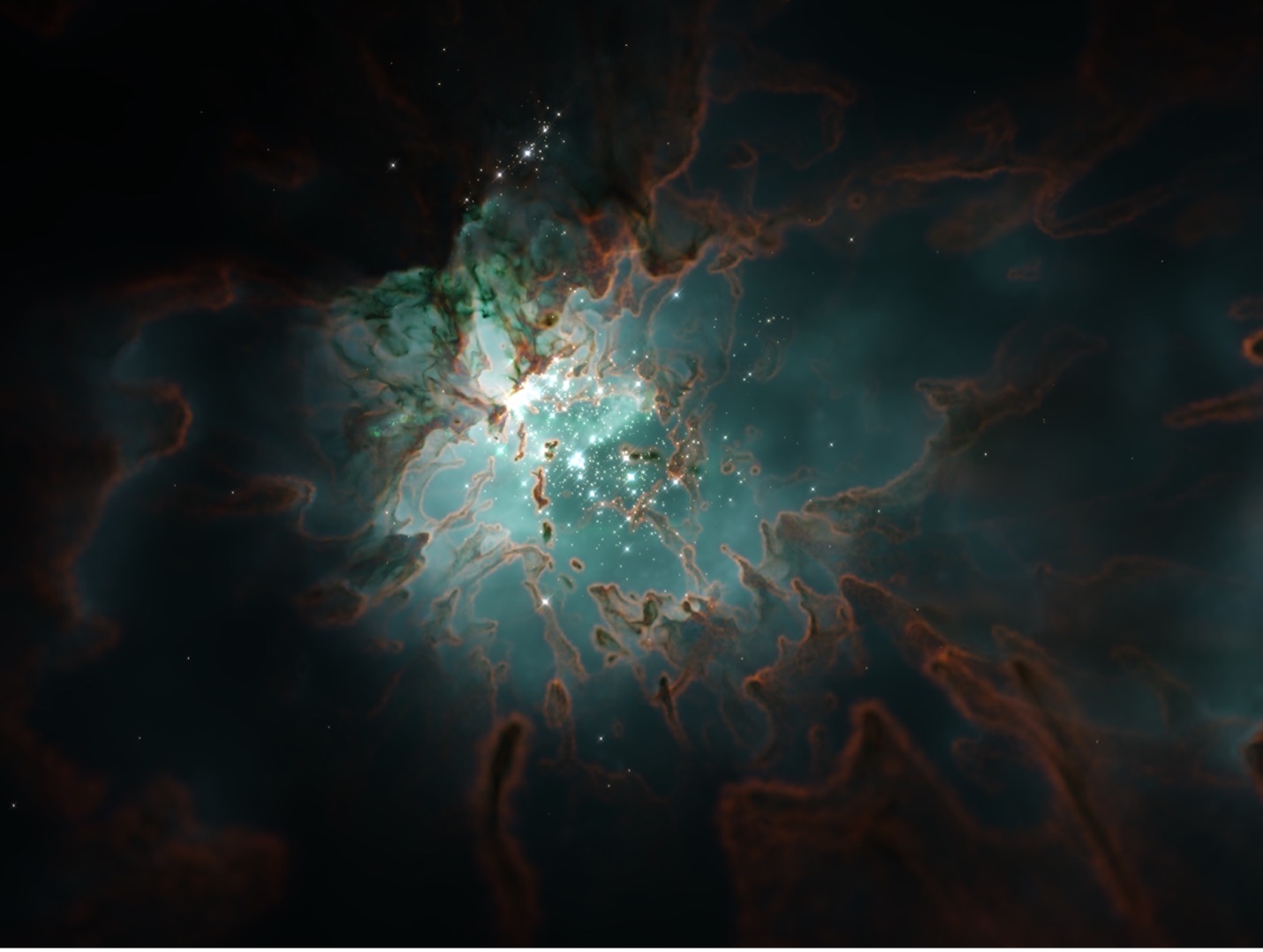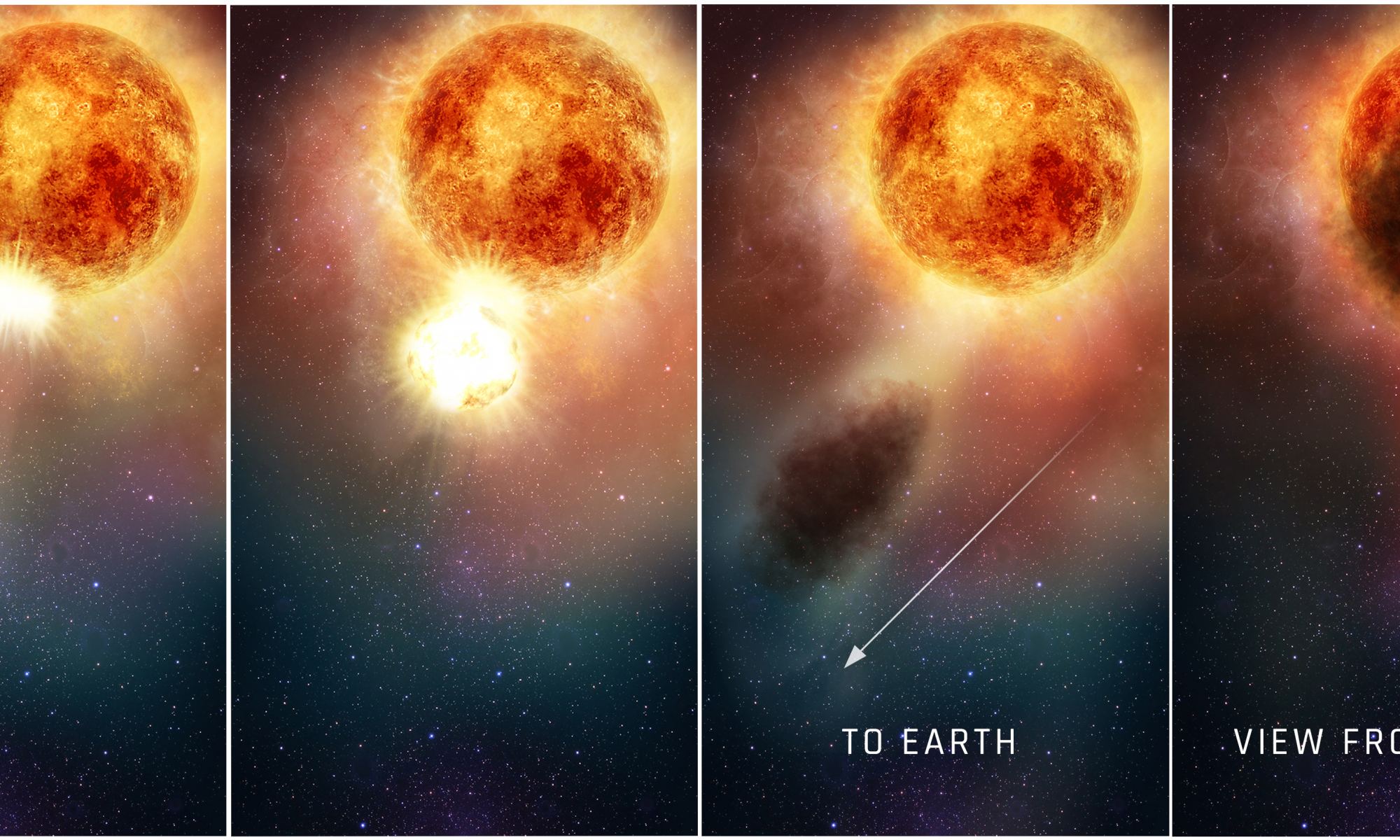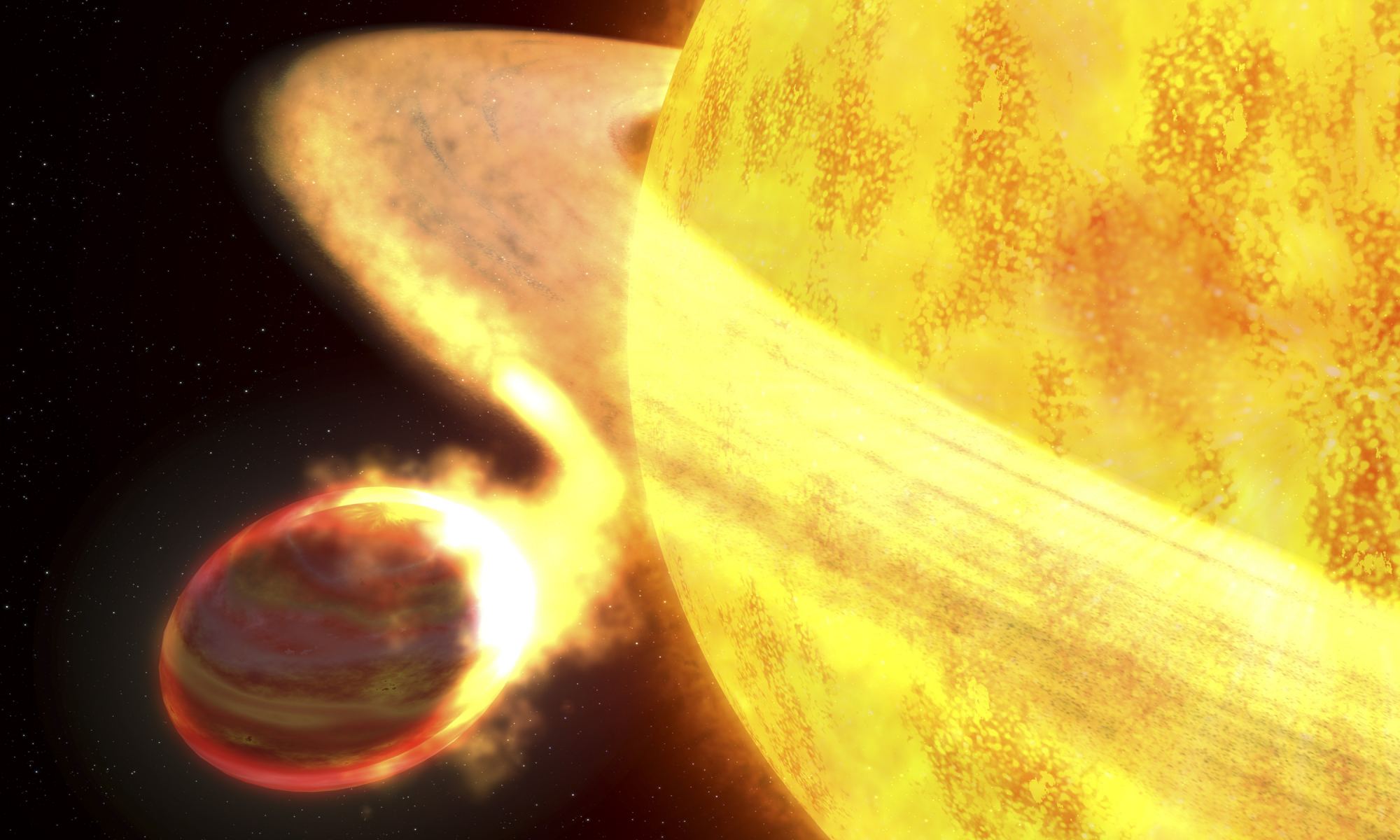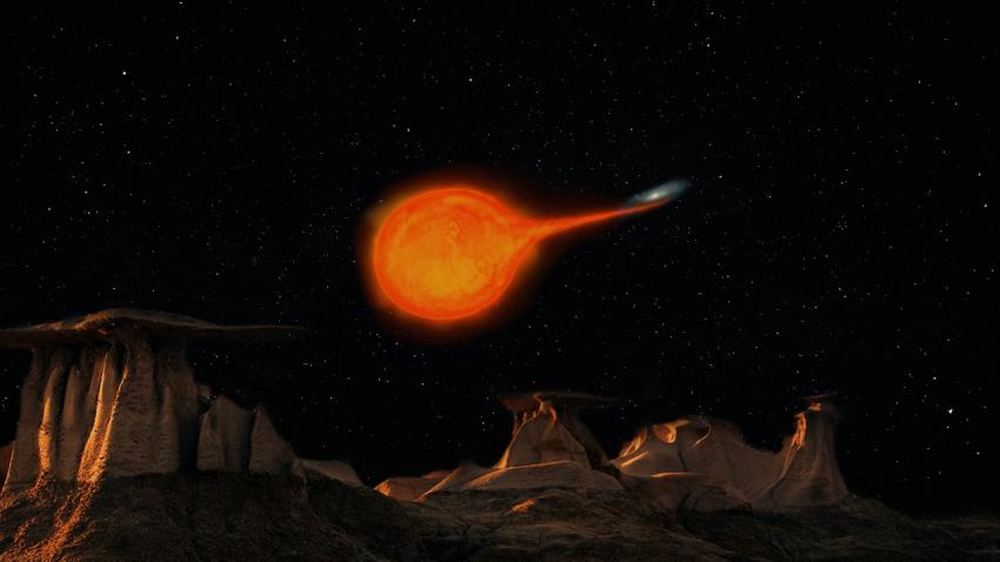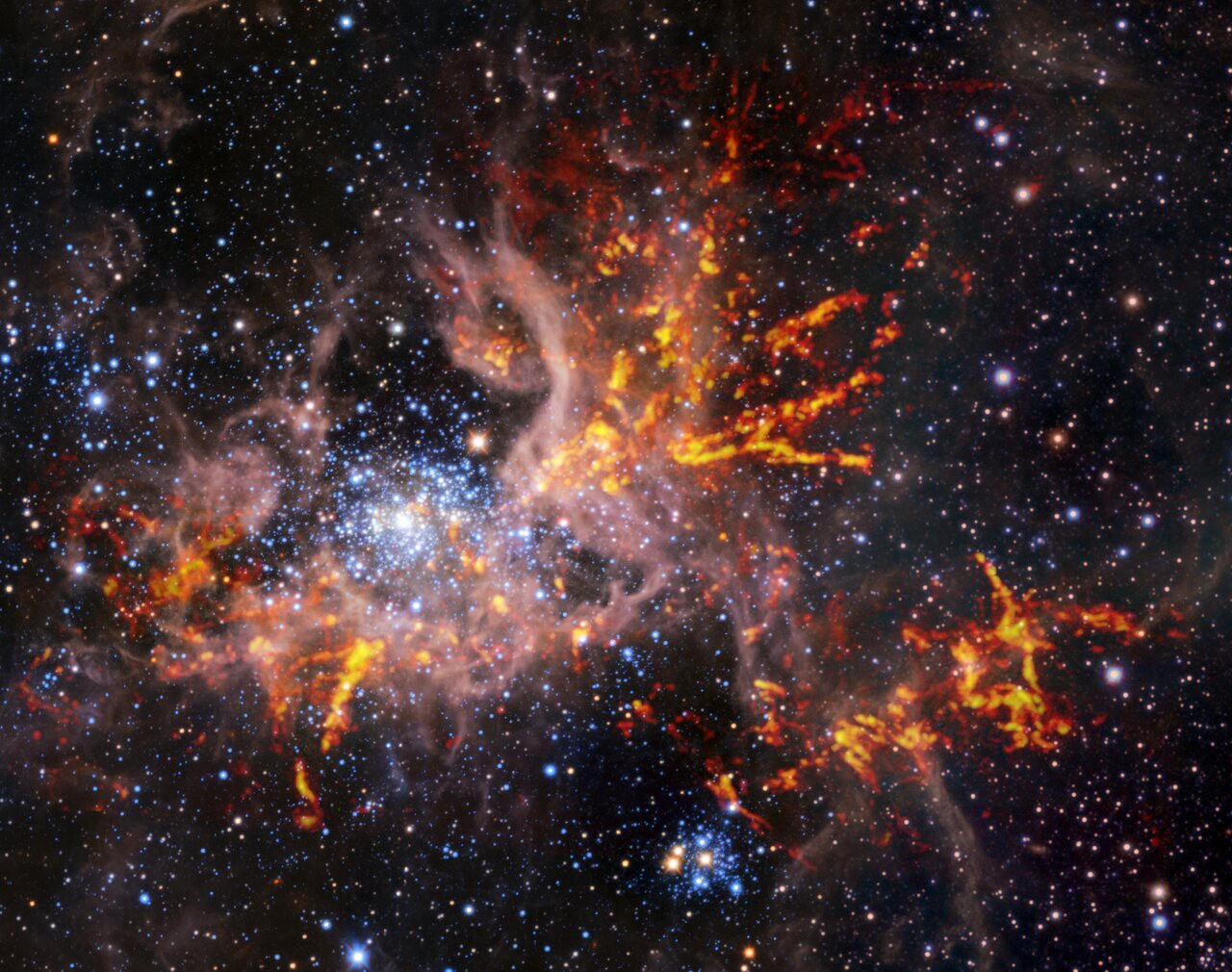Betelgeuse, the big reddish star that is the second brightest point in the constellation Orion (after Rigel), has been puzzling astronomers for years. Starting in October 2019, Belegeuse began to dim considerably, eventually reaching 1/3rd of its normal brightness a few months later. And then, just as mysteriously, it began to brighten again and (as of February 2022) has remained in a normal brightness range. The most likely reason appeared to be a circumstellar dust cloud rather than any changes in the star’s intrinsic brightness.
Using data from NASA’s Hubble Space Telescope (HST) and several other observatories, astronomers have concluded that a Surface Mass Ejection (SME) was the culprit. This event occurred in 2019 when Betelgeuse released a substantial mass of material that cooled to form a circumsolar dust ring, obscuring the star. In contrast to what regularly happens with our Sun during a Coronal Mass Ejections (CME), Betelgeuse ejected roughly 400 billion times as much mass as a typical CME. This is the first time something of this nature has been seen in a normal star’s behavior.
Continue reading “Why Betelgeuse Dimmed”


